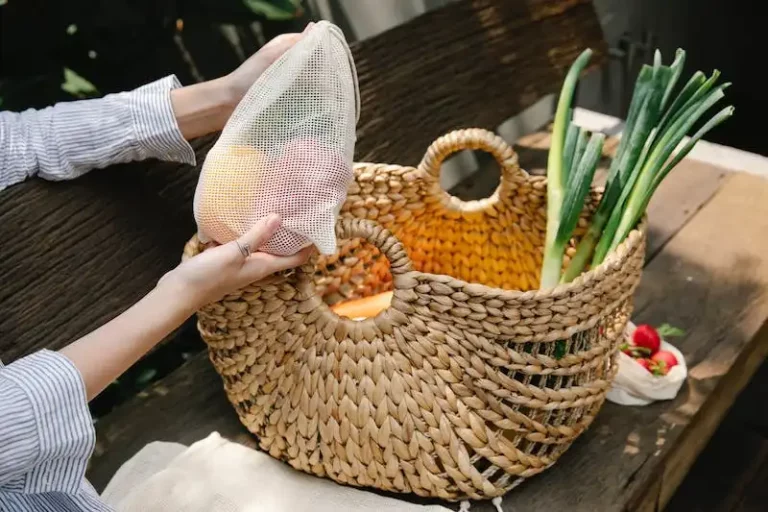Norfolk Island Pine, scientifically known as Araucaria heterophylla, is a popular choice among houseplant enthusiasts and growers. With its classic beauty and unique characteristics, this tall evergreen tree is a great addition to any indoor space. Native to Norfolk Island, a small island in the South Pacific, this plant thrives in bright and sunny locations, making it a perfect fit for homes and offices.
One of the main reasons why Norfolk Island Pines are so popular is their low maintenance needs. They are relatively easy to care for, requiring regular watering and occasional misting. These plants can reach impressive heights, so it’s important to provide them with a suitable container or pot that can support their growth. While they can be grown outdoors year-round in warmer climates, in colder regions, it’s best to move them indoors during the winter season.
When it comes to caring for Norfolk Island Pines, it’s essential to recognize their specific needs. These plants prefer bright, indirect light and should be placed near a window or in a well-lit room. They also require well-draining soil and should be watered regularly, ensuring that excess water is allowed to drain from the pot. To maintain their health and vibrant green color, it’s important to avoid overwatering or underwatering these plants.
For those who may be new to Norfolk Island Pine care, there are a few tips and solutions to common issues that can help ensure their success. One common issue is yellowing needles, which can be caused by overwatering, underwatering, or exposure to cold drafts. To address this, it’s important to adjust watering habits and find a suitable location for the plant. Additionally, using a water saucer underneath the pot and filling it with pebbles or moss can help create a more humid environment, which Norfolk Island Pines prefer.
Growing Norfolk Island Pine
Growing Norfolk Island Pine, or Araucaria heterophylla, is a popular choice for indoor and outdoor decorations, especially during the holidays. This tall and upright evergreen tree is known for its beauty and can thrive year-round as a houseplant.
One of the main characteristics of Norfolk Island Pine is its ability to grow in a variety of conditions. It can live in a central heating habitat, although it needs protection from frost. When growing Norfolk Island Pine, it’s important to recognize its festive characteristics and the challenges it may face.
Young Norfolk Island Pines are often used as living Christmas trees. They can be decorated with ornaments and brought indoors during the holiday season. However, it’s important to remember that they are living plants and not meant to stay indoors forever. Norfolk Island Pines will thrive best when placed near a window where they can receive natural light.
One of the challenges with growing Norfolk Island Pine is its tendency to drop needles. Although this can be frustrating, it’s important to understand that it’s a natural part of their growth. During the winter months, Norfolk Island Pines may lose some of their older needles, but they will continue to grow and produce new ones.
When it comes to caring for Norfolk Island Pine, there are a few tips to keep in mind. First, make sure to water the plant regularly, but avoid overwatering as it may lead to root rot. It’s best to let the soil dry out slightly between waterings. Secondly, provide the plant with some humidity by placing a saucer filled with water and pebbles underneath the pot.
Lastly, Norfolk Island Pines can benefit from occasional trimming to maintain their shape and health. You can trim the branches and tips to encourage a fuller and more compact growth. Just be sure to do this early in the growing season to avoid causing stress to the plant.
Overall, Norfolk Island Pines are incredibly beautiful and long-lived trees that can bring a touch of the holidays to any home. With proper care and attention, they can thrive and add a festive touch to your space.
Norfolk Island Pine
The Norfolk Island Pine is a popular houseplant known for its unique appearance and ability to thrive indoors. It is a member of the Araucariaceae family and is native to Norfolk Island, a small island in the Pacific Ocean.
UF/IFAS publication no longer recommends its growth indoors and/or as an ornament due to difficulty. Although it needs bright, indirect light to survive, it should not be placed in direct sunlight. In their natural habitat, these pines can grow up to 200 feet tall, but when grown indoors, they typically reach a height of 6 to 8 feet.
One challenge with growing Norfolk Island Pines indoors is their sensitivity to temperature changes. They prefer a cool room temperature year-round and can suffer if exposed to drafts or extreme temperatures. They also require high humidity, so it is important to regularly mist the foliage or place the pot on a tray filled with water and pebbles to increase humidity.
Watering is another important aspect of caring for Norfolk Island Pines. They should be watered thoroughly but allowed to dry out slightly between waterings. Overwatering can cause the roots to rot, while underwatering can lead to the tree drying out and ultimately dying.
These pines are also sensitive to fertilizer, and too much can cause the foliage to turn brown. It is recommended to fertilize Norfolk Island Pines every other month during the growing season with a balanced liquid houseplant fertilizer.
When it comes to potting, Norfolk Island Pines need well-draining soil and should be planted in a container with drainage holes. Repotting should be done every 2-3 years in the spring, using a slightly larger pot. However, it is essential not to choose a pot that is too big, as the excess soil can retain too much moisture and lead to root rot.
Recognizing the cues that your Norfolk Island Pine needs repotting is essential. Some signs include roots growing through the bottom of the pot, slow growth, yellowing or dropping of lower needles, or the plant becoming top-heavy and tipping over.
Overall, Norfolk Island Pines are beautiful and unique trees that can thrive indoors with the right care. By taking the time to meet their specific needs for light, temperature, humidity, and watering, you can enjoy the beauty of these pines in your home for many years to come.
Characteristics
The Norfolk Island Pine, or Araucaria heterophylla, is a popular houseplant known for its festive characteristics. It has bright green and yellow foliage that resembles a small pine tree, making it a perfect addition to any home or office.
One of the key characteristics of the Norfolk Island Pine is that it can be grown indoors year-round. It thrives in containers and can be easily moved around to find the best spot in your home. Recognizing its potential as a houseplant, many growers trim and shape the pine to maintain its straight and upright growth.
In terms of care, the Norfolk Island Pine needs to be planted in a well-draining potting mix and watered regularly. It prefers bright, indirect light and can even tolerate some direct sunlight. Watering cues can be taken from the soil’s moisture levels, with the plant needing more water during the warmer seasons.
This pine is native to Norfolk Island and can be found on the central pacific coastline of New Zealand. Because of its natural habitat, it is accustomed to warmer temperatures and does not fare well in frost. Therefore, it is important to place the plant away from drafty windows or doors during the colder months.
One potential issue with growing Norfolk Island Pines indoors is that they can grow quite fast when provided with the right conditions. This means that they may outgrow their current pot, and repotting may be necessary to ensure their health and continued growth. It’s recommended to do this in the spring or early summer.
One of the best things about the Norfolk Island Pine is that it is incredibly long-lived, with some trees living for more than 50 years. This makes it a popular choice for those looking for a plant that will bring beauty to their home for many holidays to come.
So if you’re looking for a low-maintenance, festive plant that is sure to bring year-round joy, the Norfolk Island Pine is the perfect choice. Just remember to provide it with the care it needs, and it will thrive in your home.
Planting and Care
When it comes to planting and caring for Norfolk Island Pine, it is important to take into consideration its natural habitat and characteristics. These trees, also known as Araucaria heterophylla, are native to Norfolk Island, a small island located in the Pacific Ocean.
One of the key features of Norfolk Island Pine is its ability to thrive indoors. They can be grown in a container or pot, making them a popular choice for houseplants. However, they can also be planted outdoors in tropical and subtropical regions. If you choose to grow them outdoors, make sure to place them in a location protected from heavy winds and frost.
When planting Norfolk Island Pine, it is essential to use well-draining potting soil or a mixture of peat moss and perlite. This will help prevent overwatering and allow the roots to breathe. It is recommended to water the plant when the top inch of soil is dry, being careful not to let the soil become completely dry or waterlogged.
Norfolk Island Pine requires bright, indirect sunlight to thrive. Placing the plant near a window or in a well-lit room is ideal. However, be cautious of direct sunlight, as it can scorch the foliage and cause damage to the plant.
When it comes to care, Norfolk Island Pine is a relatively low-maintenance plant. They are slow growers and do not require regular trimming. However, if the plant becomes too tall or leggy, you can trim the top to encourage a more compact and bushy growth.
These trees are known for their year-round greenery, but it is common for them to shed older needles. If your Norfolk Island Pine starts to lose some of its needles, do not worry – it is a natural process and does not indicate a health issue.
In terms of temperature, Norfolk Island Pine prefers a temperature range of 50 to 70 degrees Fahrenheit (10 to 21 degrees Celsius). They can tolerate slightly lower temperatures for short periods, but it is important to protect them from freezing temperatures.
Providing the right amount of humidity is also important for the health of Norfolk Island Pine. They thrive in a humid environment, similar to their natural habitat. You can increase humidity levels by misting the foliage with water or placing a tray of water with pebbles near the plant. Another option is to use a humidifier to maintain the proper humidity levels.
Overall, taking care of Norfolk Island Pine is a rewarding process. With the right nurturing and care, they can live for many years, bringing beauty to your home or office space. So whenever you take a moment to touch the soft needles of this classic houseplant, remember the lush green forests of Norfolk Island and the challenges these trees overcome to thrive in our homes.




